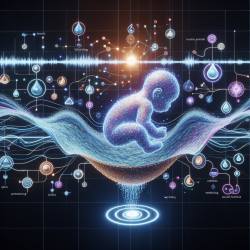Introduction
The cerebellum, often referred to as the "little brain," plays a crucial role in coordinating movement and balance. Its dysfunction is linked to movement disorders such as ataxia, tremor, and dystonia. Recent research, as reviewed in the article "Physiological Recordings of the Cerebellum in Movement Disorders," highlights the potential of non-invasive techniques like electroencephalogram (EEG) and magnetoencephalogram (MEG) in understanding cerebellar physiology. These insights can significantly influence therapeutic strategies for movement disorders.
Understanding Cerebellar Physiology
The cerebellum's unique structure and connectivity with other brain regions make it integral to movement control. Physiological recordings have traditionally been invasive, limiting their application. However, EEG and MEG offer non-invasive alternatives that provide high temporal resolution, making them suitable for studying cerebellar activity in both healthy individuals and those with movement disorders.
Applications in Movement Disorders
Ataxia
Ataxia, characterized by incoordination and imbalance, is often linked to cerebellar degeneration. Studies using EEG and MEG have shown that cerebellar network analysis can predict disease onset and serve as biomarkers for clinical trials. For instance, increased cerebello-frontal connectivity has been associated with improved ataxia symptoms following targeted interventions.
Tremor
Tremor disorders, including essential tremor and Parkinsonian tremor, have been studied using EEG and MEG to map the oscillatory networks involved. These studies have identified the cerebellum's role in tremor generation, with specific oscillatory patterns correlating with tremor severity. This understanding could lead to more targeted therapeutic approaches.
Dystonia
Dystonia involves involuntary muscle contractions and is linked to both the basal ganglia and cerebellum. Research has shown that abnormal cerebellar-cortical interactions may contribute to dystonic symptoms. Understanding these networks can aid in developing interventions that target these specific pathways.
Implications for Therapy
The insights gained from cerebellar physiology studies have significant implications for therapeutic development. Non-invasive techniques like EEG and MEG can be used to monitor disease progression and therapeutic responses, potentially serving as biomarkers. Furthermore, these techniques can guide neuromodulation strategies, such as transcranial magnetic stimulation, to improve movement disorder symptoms.
Conclusion
Understanding cerebellar physiology through non-invasive techniques offers promising avenues for improving therapeutic outcomes in movement disorders. As research continues to evolve, these insights will likely play a crucial role in developing more effective treatments. Practitioners are encouraged to integrate these findings into their practice and consider further research to enhance patient care.
To read the original research paper, please follow this link: Physiological Recordings of the Cerebellum in Movement Disorders.










